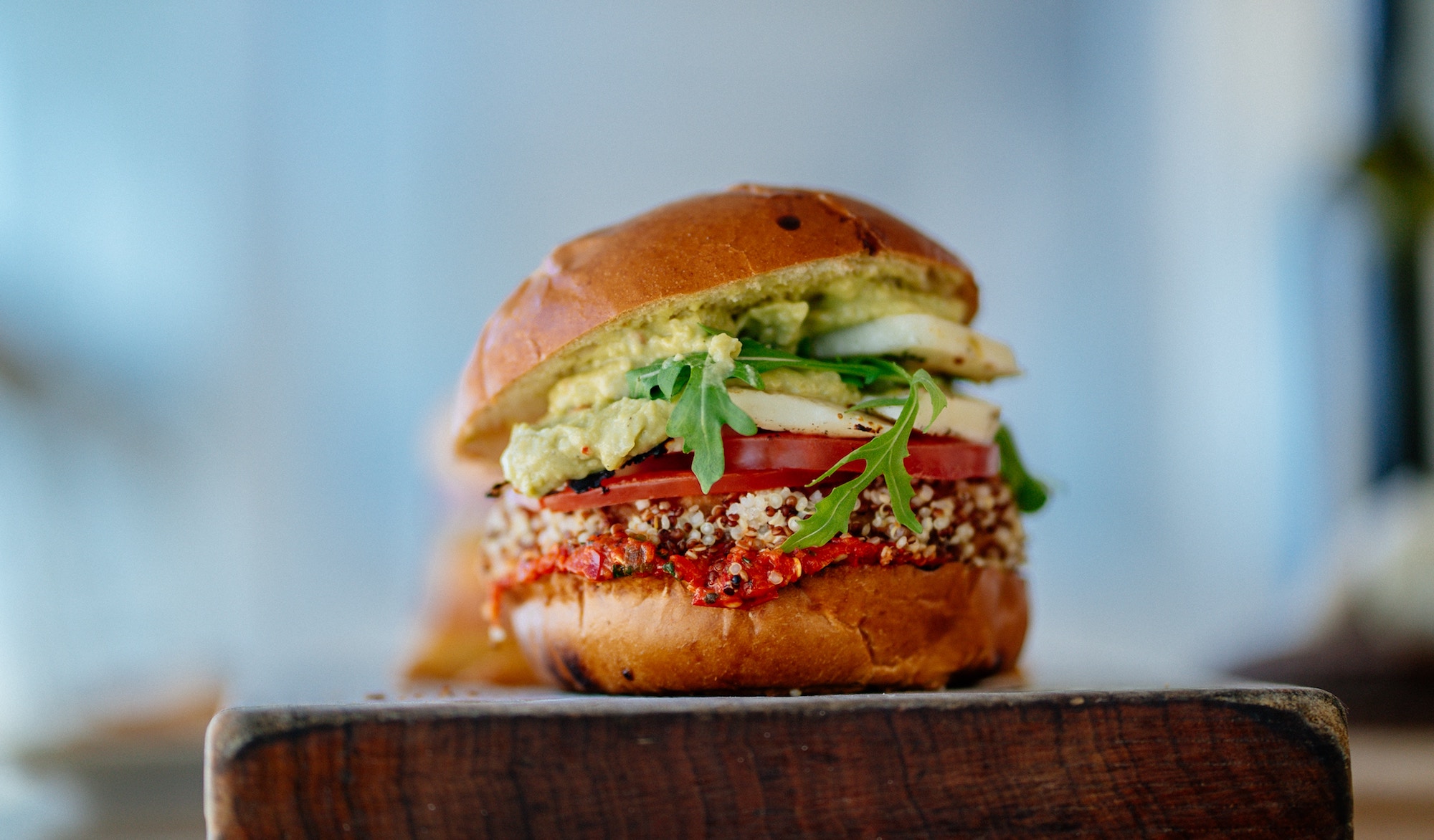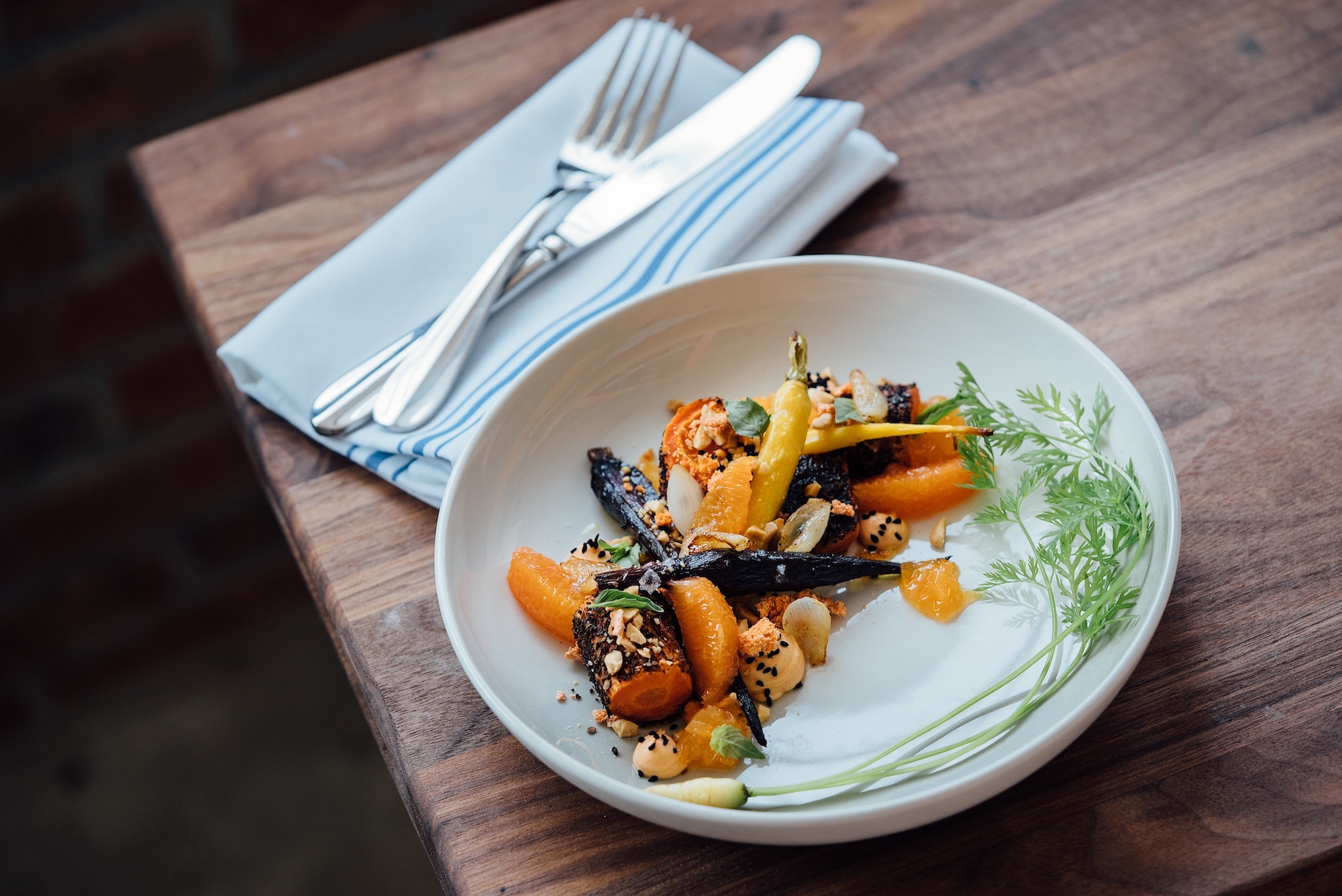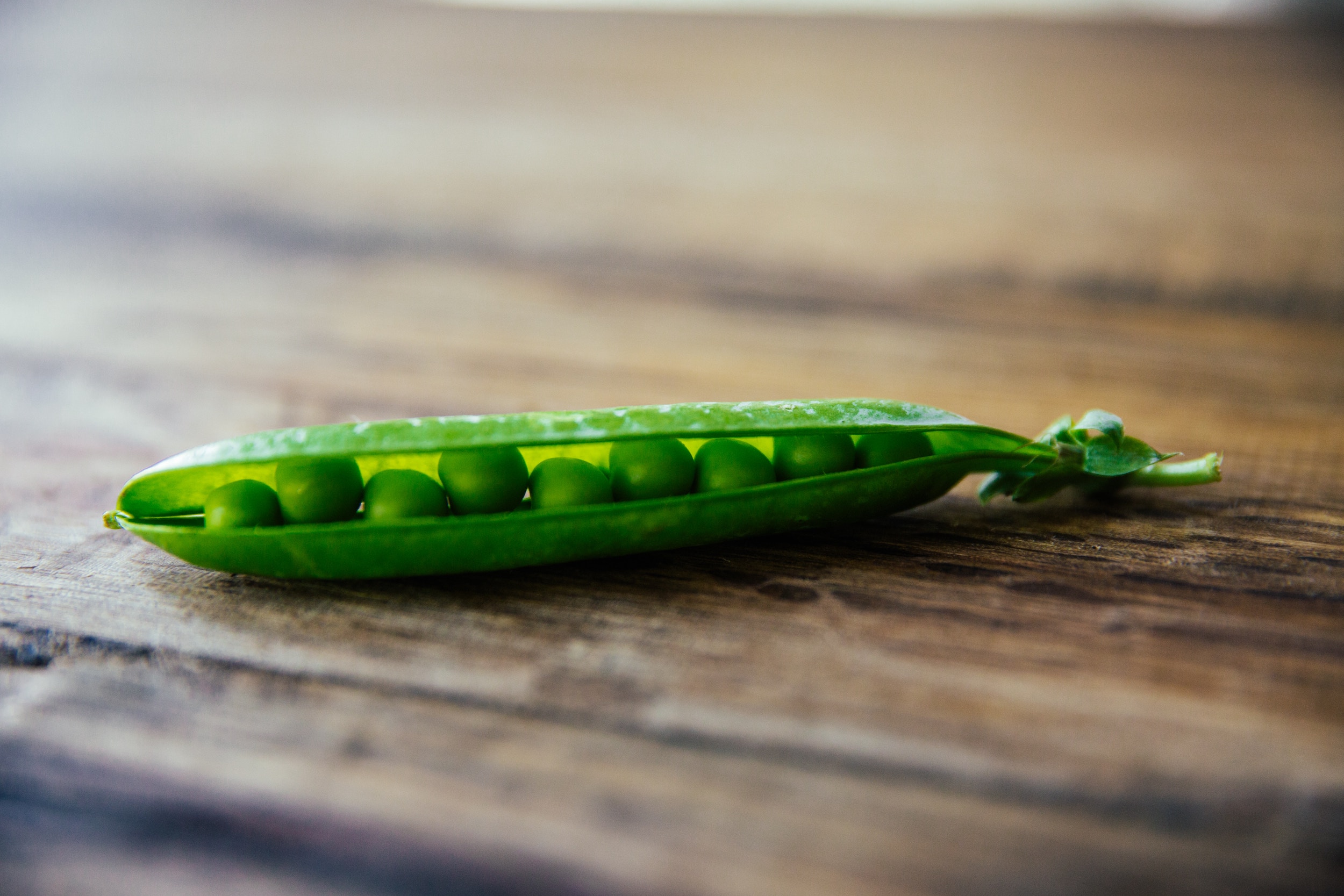日本は、ミシュランで星を獲得したレストランの店舗数が世界一の国である。美食ツアーは、外国人が日本を訪れる目的のひとつだ。また日本の料理に対するこだわりの強さには、ただならぬものがある。しかしヴィーガニズム(絶対菜食主義)、ベジタリアニズムとの関係性については、前途多難という悪評を受けている。

Photo by Lefteris kallergis on Unsplash
“肉を全く食べない”というライフスタイルの受け入れ方については、奇妙なことに、日本の歴史と、現代人の意識は全く異なる。日本人の意識はゆっくりと変化しているが、その道のりは簡単なものではなかった。しかし長い時間をかけ、大きく変化した 。日本と肉食の異常な関係性を理解するため、まずは日本の料理の歴史をざっくりと把握しておこう。
「古典的な」日本の食事と言われて多くの人が想像するものの起源を辿るには、「精進料理」を知らないことには始まらない。精進料理は、日本の仏僧の伝統的な食事様式である。精進料理という肉を使わない食事様式は、禅の哲学が全国に広まっていた13世紀頃に全盛期を迎えた。
精進料理は中国の影響を受けた料理であり、その裏にある哲学は非常に分かりやすいが、2つの理由が盛り込まれている。1つ目の理由が、禅のイデオロギーである。仏教徒の多くは、人間が動物を殺して消費すると、魂が曇り、瞑想の純度が落ちると信じていた。
ベジタリアンというライフスタイルの2つ目の理由は、無駄をできるだけなくすことである。自給自足、質素、持続可能性は、精進料理の根幹を成す。季節の食べ物を自分の手で調達することで、自然と調和し、自然の恩恵に対する感謝を深めることができると信じられていた。

Photo by Austin Neill on Unsplash
これらの考え方は遥か昔のイデオロギーではあるが、現代においても多くの人々がこの考え方に基づき、野菜中心の食生活を築いている。ヴィーガンレストランで働く若い日本人、関口 海(かい)さんを取材したところ、自然への感謝がヴィーガンとしての新たな人生を送るターニングポイントとなった経緯を聞かせてくれた。
「僕は2年程前、休日に(オーストラリアの)ゴールドコーストを訪れ、美しい小川、砂浜、タイドプールに囲まれた日々を送りました。それはとても素晴らしい経験でした。そこで僕は日本に帰ったら、環境の勉強を始め、主に食品の観点から、持続可能性にどのような影響があるのか調べることにしました。映画を鑑賞し、本を読み、講演を聞きに行ったりしました。その結果、自然のために、動物性の食品を口にするのは止めるべきだと思いました」。
国内最大の宗教が食品を倫理的に消費し、肉を使わない食生活を基本としていた日本が、ベジタリアンの生きづらい国という悪評を受けるようになるまでには、どのような経緯があったのだろう。
日本で(赤身)肉を食べるという革命が起こったのは、そう昔のことではない。マルタ・ザラスカ氏が2016年発表の著書『人類はなぜ肉食をやめられないのか(MEATHOOKED)』で取り上げているように、1939年という最近まで、一般的な日本人の肉の年間平均消費量は、1日あたり2.5グラム程度だった。現在の水準を見てみると、平均消費量は133グラムで、消費量が最も多いのは豚肉である。
野菜中心の農業に利用すれば、より有効に活用できるにも関わらず、農業用地が不足していることを懸念し、日本では中世(西暦675年)に天皇が毎年一定期間中の肉食を禁止した。しかしその後、日本は西洋の影響を受け肉食を導入し、それが主流化した。
18世紀、オランダの影響により、肉食が健康に良いという考え方が日本に根付いた。欧州諸国の肉中心の食生活が渡来すると、肉食は社会の発展を象徴するもののようにも捉えられ、日本での赤身肉消費量はたちまち増加した。
実際、明治天皇を頂点とする日本政府は、肉食が国の近代化の鍵を握り、軍隊の増強を担う重要な要因となると信じていた。第二次世界大戦と、それに伴うアメリカの支配を受け、アメリカ式の食生活は、取り返しがつかない程大きな影響を及ぼした。ベーコン、ハンバーガー、マクドナルドが持ち込まれると共に、牛丼店が登場し、コンビニではフライドチキンが販売されるなど、西洋諸国を真似た日本独自の肉料理も利用できるようになり、肉食が定着した。
第二次世界大戦後に根付いた赤身肉を好む食生活は、ますます広く普及し、ごく最近までは一般的な食生活とされてきた。かつて肉食文化を取り入れたように、日本がさらにグローバル化を進める中で、西洋生まれの食事主義から影響を受け、肉食を止め、ヴィーガンやベジタリアンとなる人々がまだ数は少ないものの増えつつある。しかしヴィーガン、ベジタリアンに対する社会の風当たりは強い。
「ヴィーガンになる以前は、友人から外食や飲み会の誘いがあり、私はその誘いを必ず受けていました。しかしヴィーガンとなった今、友人から誘われることはほとんどなくなりました」。と海さんが語るように、ヴィーガンに転身すると、その後の社会的生活が全く異なるものとなった。海さんは、「外食する時には、お金と時間を無駄にしているだけではないかという風に感じていましたが、今はそのような問題はない。時間とお金が確保できています」と話しており、物事を大きな目でとらえれば、事態は改善される結果となった。
海さんにはある持論があって、肉食の友人から食事に誘われることに嫌気を感じている。「日本人がベジタリアン、ヴィーガンになった時には、『私はヴィーガンだけどあなたはヴィーガンではないから、私はあなたとは別の世界に住んでいる』という風に、社会を真っ二つに分けて考えます。この考え方は、あまりにもヒッピー的だと思われるだろう」。
しかし海さんにとっては、ヒッピーかどうかは関係ない。海さんは、彼が言うところの“パンクスタイル”という考え方を支持している。彼の言うパンクスタイルとは、『社会意識を持ち、ハイペースで仕事をこなし、目的を持って生き、そして社会的規範を疑いもなく受け入れることを常に問題視しながら生きる』という精神である。
近代的な考え方であるヴィーガニズムは、今もなお、ヒッピー的な、西洋色の強すぎるコンセプトのように捉えられることがある。しかしヴィーガニズムへの見方は変わりつつあり、それも急速に変化している。

Photo by Adam Jaime on Unsplash
自由が丘の裏通りに入ると、T’sレストランという徹底的なヴィーガンレストランがある。絶えず出入りする客の中には外国人もいるが、大半は日本人で、栄養満点の野菜がたっぷり入ったラーメンを熱心に食べ進めている。夜の原宿周辺を散策すると、エイタブリッシュ(8ablish)に行き当たる。そこは動物性食品を一切使用していないことを売りにしたダイニングレストランで、完璧主義という日本的な感覚に、西洋料理のイデオロギーを組み合わせている。元気が出るものが食べたいという時には、渋谷にラパスという店がある。オーガニックにこだわったこの店は、植物に囲まれた空間で、ハンバーガーなどのソウルフードや、ボリュームたっぷりのカレーを食べることができ、何から何まで嬉しい店だ。
ここ数年間、他の国と比べると日本で肉を食べないというのは少し難しいことだったかもしれない。しかし現在、ミートフリーは次なる進化の幕を開けようとしている。東京がイノベーションの中心地であり、驚くべき食文化を誇り、電光石火の進化を遂げる都市であることを考えれば、日本の料理業界で何が起こるのか、非常に楽しみだ。
—
参考
レストラン エイタブリッシュ | Restaurant 8ablish
Web: eightablish.com/
住所: 107-0062 東京都港区南青山5丁目 10-17
TEL: 03-6805-0597
T’s レストラン
Web: ts-restaurant.jp/
住所: 152-0035 東京都目黒区自由が丘2丁目 9-6
TEL: 03-3717-0831
ORGANIC TABLE BY LAPAZ
Web: www.lapaz-tokyo.com/
住所: 150-0001 東京都渋谷区神宮前3丁目 38-11
TEL: 03-6438-9624
—
Lucy Dayman | ルーシー・デイマン
オーストラリア生まれ。2016年、オーストラリア・メルボルンでのカルチャー・音楽雑誌の編集の仕事を辞め、日本で旅をしながら仕事を始める。フリーランスライターとしての仕事と旅の傍ら、フィルム写真を撮影している。
Instagram: @lucy.dayman.
HP: lucydayman.com
Japan is home to more Michelin starred restaurants than anywhere else in the world. Food tourism is one of the motivating factors foreigners visit the country, and the nation’s obsession with the culinary world is almost incomparable, but when it comes to its relationship with veganism and vegetarianism, the country has a reputation for being notoriously difficult to navigate.
There’s a strange dichotomy between the country’s history and current social acceptance of non-meat eating lifestyles, and although it’s slowly changing, the journey has been far from easy. To understand Japan’s unusual relationship with meat, we have to briefly look at the country’s culinary history.
When you trace the origins of what many would consider to be ‘classic’ Japanese dining, you can’t look past ‘shojin ryori’ the traditional dining style of the nation’s Buddhist monks. This meat-free lifestyle hit fever pitch around the 13th century when the philosophies of Zen Buddhism swept across the country.
An influence from China, the philosophies behind shojin ryori were pretty straightforward, but two-fold. First there were the ethical ideologies of Zen Buddhism. Many Buddhists believed that killing animals for human consumption clouded the spirit and would interfere with the purity of meditation.
The second reason for a vegetarian lifestyle was the minimization of waste. Self-sufficiency, simplicity and sustainability are the backbones of shojin ryori style cooking. It was believed that self-sourced, seasonal foods helped bring one in touch with nature and encourage a deeper level of appreciation for the gifts that nature delivers us.
Although they’re ancient ideologies, they are still very much today the foundations upon which many build their plant-based lifestyles. Speaking with Kai a young Japanese vegan restaurant worker, he explained how his appreciation of nature became the turning point in his new life as a vegan.
“Around two years ago I went on a holiday to the Gold Coast [Australia], and was surrounded by nature, beautiful creeks, beaches, rivers, rock-pools. It was really amazing. When I came back to Japan, I started to study the environment, with a focus on food, and how it impacts sustainability. I watched movies, read books and listened to speakers. I thought, oh I have to stop eating animal products, for nature.”
So how did Japan go from nation whose biggest religions were based on the ethical consumption of food and meat-free lifestyles to one with a reputation for being notoriously difficult for non-carnivores?
Well, the (red) meat revolution in Japan is a relatively new one. In fact as Marta Zaraska covers in his 2016 book MEATHOOKED, as recently as 1939 the typical Japanese person ate around two and a half grams of meat per day, over a yearly average. By today’s standard the average is 133 grams, and the meat topping the list is pork.
A shortage of available farming land that could be better utilized by plant-based agriculture meant that in medieval times (675 CE) the country’s rulers imposed seasonal meat eating bans. But later, with western influence came the introduction of meat eating to the mainstream.
In the 18th century, the Dutch implanted the idea in the Japanese psyche that eating meat was beneficial for health. The meat-centric diets of Europeans were loaded with connotations of social progress and it wasn’t long before Japan’s red meat consumption increased.
In fact, emperor Meiji and his government believed eating meat was key to the nation’s modernization and an important factor in bolstering the strength of the army. Following World War II, and the American occupation that with it, the US style of eating became irreversibly influential. With the introduction of bacon, hamburgers, and Mc Donald’s came also western inspired localized incarnations of red-meat options, like beef bowl outlets and convenience store fried chicken.
This post World War II red meat loving diet has been the more typical norm that was until recently. As Japan has become a much more globalized nation, like it did with meat, western dietary influence has sparked a kind of small but growing alternative, vegan and vegetarian community, but it’s not without its social barriers.
As Kai explains, since becoming vegan his social life has taken a rather different form “When I wasn’t vegan, friends would invite me out for food, and drinking, and I’d always say yes. Now that I’m vegan, they invite me out less.” But in the grander scheme of things it’s worked out for the better “when I was going out I felt like maybe I was just loosing money and my time, but now it’s no problem. I keep my time, my money”.
Kai has a theory about the reluctance of his carnivore friends to invite him out “I think when Japanese people become vegetarian and vegan there’s a social divide: it’s like ‘I’m vegan, you’re not vegan’ so we live in other worlds. Maybe people think it’s too hippy.”
But for him it’s not about being hippy, he adheres to what he calls “punk style” way of looking at things, an ethos of social awareness, fast paced work, living with a purpose, and always questioning unchallenged acceptance of social norms.
Although contemporary vegetarianism is still sometimes seen as a hippy too-western concept, it’s changing, and fast.
Head down the back streets of Jiyugaoka and you’ll see the strictly vegan T’s café with a constant flow of customers, some foreign but many Japanese digging into big hearty, vegetable filled bowls of ramen. Spend an evening strolling around Harajuku and you’ll stumble upon Eightablish (8ablish) a proudly animal free fine dining restaurant that combines the Japanese sense of perfectionism with more western cooking ideologies. If you’re looking for the ultimate comfort food you’ll find Shibuya’s LAPAZ a strictly organic, plant based establishment serving up soul food like burgers and hearty curries that’ll satisfy all your cravings.
Although in previous years, yes it may have been a little more challenging to avoid meat in Japan, today we’re on the cusp of what looks to be a second meat free evolution. Given that Tokyo is the city of innovation, incredible food and lightening evolution, what’s on this culinary horizon is very exciting.
—
Restaurants mentioned in the piece
Eightablish (8ablish), Harajuku
Web:eightablish.com/
Address: 5 Chome-10-17 Minamiaoyama, Minato, Tokyo 107-0062
Ph: +81 3 6805 0597
T’s, Jiyugaoka
Web: ts-restaurant.jp/
Address: 2 Chome-9-6 Jiyugaoka, Meguro, Tokyo 152-0035
Ph: +81 3 3717 0831
LAPAZ, Shibuya
Web: www.lapaz-tokyo.com/
Address: 3 Chome-38 Jingūmae, Shibuya-ku Tokyo 150-0001
Ph: +81 3 6438 9624
—
Lucy Dayman
Originally from Australia, in 2016 Lucy left her job as an editor of a culture and music magazine in Melbourne to live, work and travel in Japan. Between freelance writing and traveling, she’s been dabbling in film some very amateur film photography, which you can check out on her Instagram: @lucy.dayman. Check out her other writing work and photos at lucydayman.com



